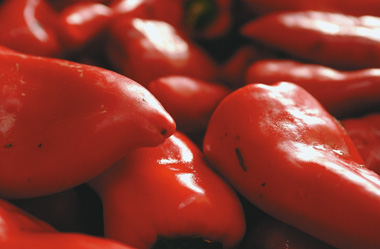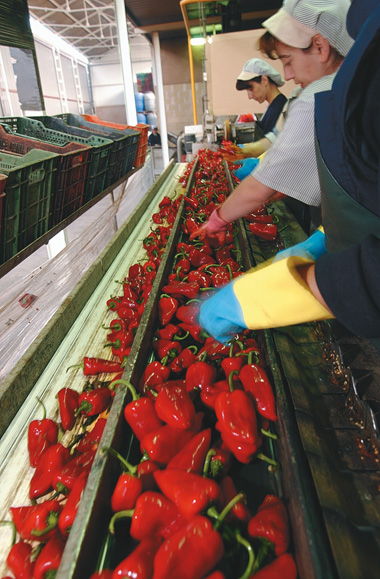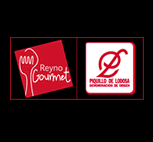Un cultivo autóctono de Navarra
The pepper belongs to the Solanaceae family and its scientific name is Capsicum annuum. Although it is a plant native to South America, the Piquillo de Navarra is an ecotype of the variety Piquillo, native of Navarre.
Piquillo peppers Lodosa is an annual herb. It is spread in nurseries. Towards the month of May, is transplanted into a groove in the final field.
Collection begins in mid-September to November. This is done manually and with successive passes collected at intervals of a week on average.
The elaboration of Pimiento lines from Lodosa vary from company to company depending on their degree of mechanization but all retain a common feature: the peppers are peeled one to one but not submerged in water or chemical solutions, and retain all their natural characteristics.
In any case, the process consists of the following phases:
- When the peppers arrive at the factory are placed in a hopper with water to remove impurities from the field.
- Once clean, go up a conveyor to move to direct flame roasting.
- The process continues with a thorough discouraged, peeling and removing seeds.
Only peeled piquillo Lodosa muddy without touching the water.
Not all Piquillo peppers are welcomed Designation. Under this name is also marketed pepper that has nothing to do with the product controlled by the Regulatory Board.
At the time of purchase, must be set at three things:
- The logo of the name.
- A numbered provided by the Regulatory Board.
- The product name: The name piquillo peppers with the name include the word "LODOSA".
Thus, only the packaging manufacturers who belong to the Denomination of Origin carry on its label: Red Peppers Lodosa.




